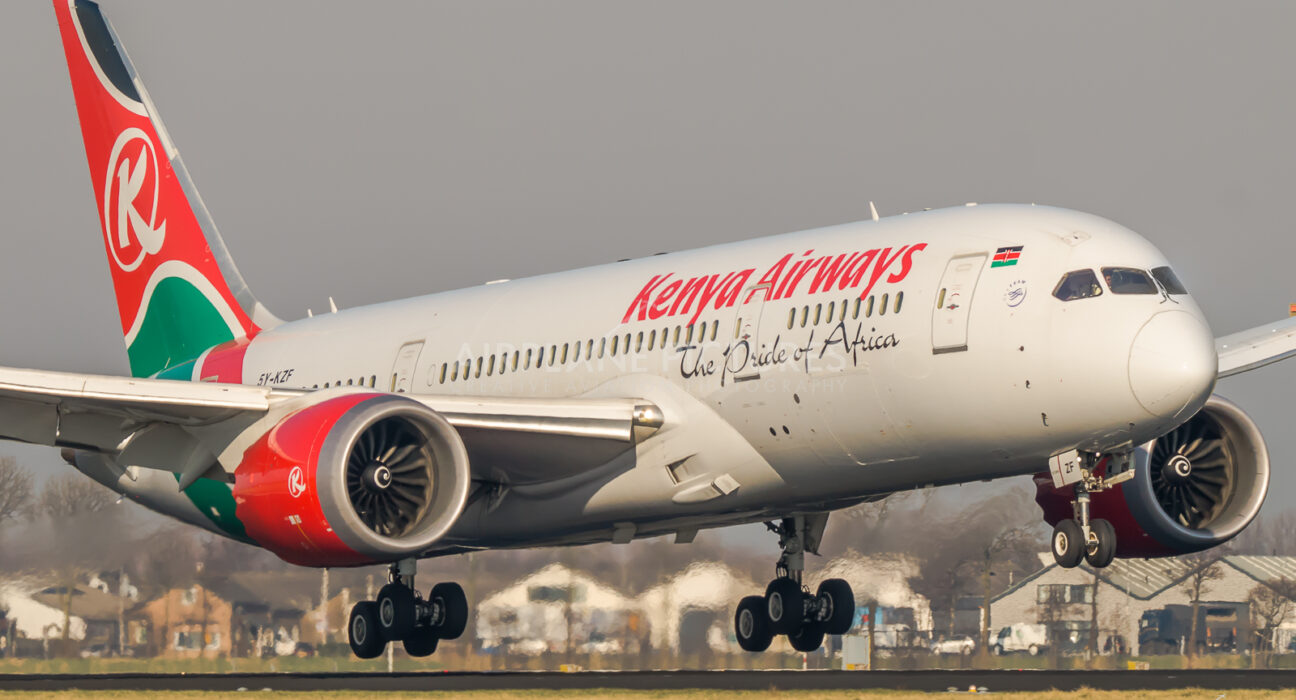In a significant milestone for Kenya’s aviation and investment sectors, the Nairobi Securities Exchange (NSE) has lifted the 4.5-year suspension on the trading of Kenya Airways (KQ) shares. The announcement, effective January 5, 2025, follows a remarkable turnaround for the national carrier, which posted a KES 513 million profit after tax for the first half of 2024—its first profit in a decade.
This development marks a new chapter for Kenya Airways, which has long been plagued by financial struggles. For investors, stakeholders, and the general public, the resumption of KQ’s trading on the NSE signals renewed hope for the airline’s recovery and future prospects.
A Long Road to Recovery
The suspension of Kenya Airways shares on the NSE, which began in 2020, was a result of a combination of factors. Years of financial losses, compounded by operational inefficiencies, mounting debt, and the devastating effects of the COVID-19 pandemic on global aviation, left the airline in dire straits.
Efforts to stabilize the airline included government bailouts, restructuring initiatives, and cost-cutting measures. However, the financial bleeding continued, leading to the suspension of its shares to protect investors and allow for a reevaluation of the airline’s strategy.
The tide began to turn in 2023 when Kenya Airways implemented a robust recovery strategy. This included renegotiating its debt, optimizing routes, cutting operational costs, and improving customer service. The airline also benefited from the recovery of global aviation as travel restrictions eased and demand for air travel rebounded.
The Catalyst: First Profit in a Decade
Kenya Airways’ return to profitability in the first half of 2024 was a watershed moment. The KES 513 million profit after tax was attributed to several key factors:
- Cost Optimization: The airline implemented stringent cost-cutting measures, including renegotiating contracts and improving operational efficiency.
- Revenue Growth: An increase in passenger numbers, coupled with higher yields on key routes, contributed to revenue growth.
- Fuel Hedging: Effective fuel-hedging strategies helped cushion the airline from volatile fuel prices, a significant cost driver for airlines globally.
- Debt Management: Restructuring efforts reduced the financial burden of Kenya Airways’ massive debt, freeing up resources for operations.
This financial turnaround not only restored investor confidence but also laid the groundwork for the NSE to lift the suspension on KQ’s shares.
Withdrawal of the National Aviation Management Bill 2020
Another critical factor in the lifting of the suspension was the withdrawal of the National Aviation Management Bill 2020. The bill, which proposed nationalizing Kenya Airways, faced significant opposition from stakeholders who feared it would stifle competition and innovation in the aviation sector.
The withdrawal of the bill signaled a commitment to allowing the airline to operate as a publicly traded entity, thereby protecting shareholder interests and ensuring transparency in its operations.
Market Reaction: Shares Surge by 60%
The lifting of the suspension was met with enthusiasm in the stock market. Kenya Airways shares surged by 60% to KES 6 during early trading, before closing at KES 3.83, representing a 5.74% gain.
This strong market performance reflects renewed investor confidence in the airline’s ability to sustain its recovery. It also highlights the pent-up demand for KQ shares, which had been unavailable for trading for nearly five years.
What This Means for Investors
For investors, the resumption of Kenya Airways’ trading on the NSE presents both opportunities and risks. On the one hand, the airline’s return to profitability and strategic initiatives provide a strong foundation for growth. On the other hand, the aviation industry remains highly volatile, with challenges such as fluctuating fuel prices, geopolitical tensions, and evolving consumer preferences.
Analysts advise caution, urging investors to closely monitor Kenya Airways’ financial performance and strategic execution in the coming quarters.
Implications for Kenya’s Aviation Sector
The resurgence of Kenya Airways has broader implications for Kenya’s aviation sector. As the country’s national carrier, KQ plays a pivotal role in connecting Kenya to global markets and promoting tourism. Its recovery is likely to boost confidence in Kenya as a regional aviation hub and attract investment in related sectors such as tourism, hospitality, and logistics.
Moreover, Kenya Airways’ success serves as a case study for other struggling airlines in Africa. It demonstrates the potential for turnaround through strategic planning, operational efficiency, and stakeholder collaboration.
The Role of the NSE and Capital Markets Authority
The Nairobi Securities Exchange and the Capital Markets Authority (CMA) played crucial roles in facilitating the lifting of Kenya Airways’ suspension. By enforcing strict regulatory requirements and ensuring transparency, these institutions have helped protect investor interests while supporting the airline’s recovery.
In a statement, the NSE emphasized the importance of Kenya Airways’ return to trading, describing it as a win for investors and a testament to the resilience of Kenya’s capital markets.
Looking Ahead: Opportunities and Challenges
As Kenya Airways charts its course forward, several opportunities and challenges lie ahead:
Opportunities
- Regional Growth: Expanding its footprint in Africa, where air travel demand is growing rapidly.
- Cargo Services: Capitalizing on the rise in demand for air cargo, particularly for e-commerce and perishable goods.
- Strategic Partnerships: Deepening alliances with other airlines to expand its network and improve efficiency.
Challenges
- Debt Overhang: Despite progress, Kenya Airways still faces a significant debt burden that could limit its financial flexibility.
- Competition: The airline operates in a highly competitive environment, with regional and global carriers vying for market share.
- Economic Volatility: External factors such as fluctuating fuel prices and exchange rate instability remain significant risks.
The lifting of the NSE suspension marks the beginning of a new era for Kenya Airways. With a clear recovery strategy, a return to profitability, and renewed investor confidence, the airline is well-positioned to reclaim its place as a leader in African aviation.
However, sustained success will require disciplined execution, innovation, and a relentless focus on customer satisfaction. For Kenya Airways, the journey ahead is as important as the milestones it has achieved.
As the airline’s shares resume trading on the NSE, all eyes will be on its performance in the months and years to come. For investors, passengers, and stakeholders, the story of Kenya Airways serves as a powerful reminder of the resilience of Kenya’s aviation sector and the opportunities that lie ahead.





